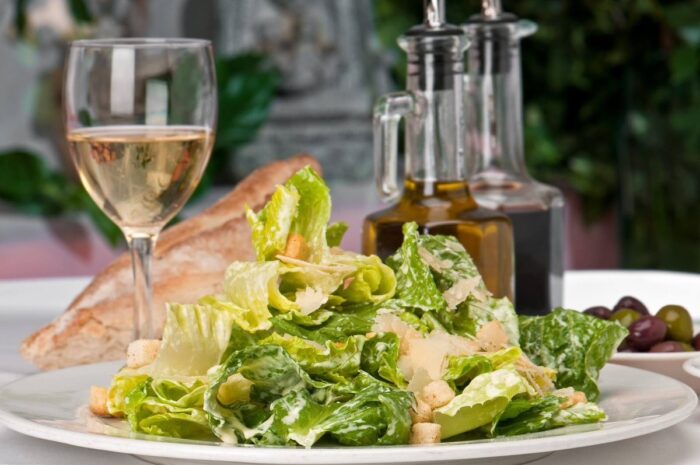Dear Ladies and Gentlemen, I am sure you have encountered this situation many times: you arrive at a great restaurant, order delicious dishes, and then the waiter asks you what type of wine would you like to drink during your dinner. But how to choose the perfect bottle? Shall I simply order the most expensive one? Trust me, there are better options.
How to read the label
This is the first step. Here we have to distinguish the New World wines and the European wines. Traditionally, the wines from America, Chile, Argentina, South Africa, Australia, and New-Zealand are called the “New World” wines. Their label is different from the European wines but more simple.
New world

1. This is the brand’s name
2. This is the region of production. Here you need to know “Napa Valley” is in California, America
3. This is the big specificity of the “New World” wines, they show the main grape variety that has been used to create the wine. Here it is the Chardonnay
4. The vintage
5. Specific information regarding the wine
European

1. Brand’s name, here the famous “Chateau Cheval Blanc”
2. Official ranking, if any. Here is refers to a Bordeaux wine ranking
3. Vintage
4. This is specific to the European Union: there are granted certifications for a certain type of wine. Here the Saint-Emilion is a wine made under certain criteria: the certain grape variety, certain blend, certain harvest. It is the guarantee of a quality we can expect.
5. The proof of this granted certification from the EU: Appellation d’origine controlee (for French wines)
6. Specific information
How to pair food and wine
First, you choose your food. Then you need to consider its following elements of your food: intensity, acidity, fat, sweet, body, spices. Then, you need to match the flavor of the wine with the flavor of the food. Here is how we feel the flavors on the tongue:

Intensity
Here we split between the food of low or high intensity: potatoes don’t have an intense taste, while duck has. The food and wine must have the same intensity. If you choose an intense food with a low-intensity wine, you won’t feel the wine. If you drink strong wines with food that has a weak taste the wine will overwhelm it.

Example: duck meat goes well with strong red wine, from Bordeaux. If you eat a dish made from steamed chicken, drink white wine with a low-medium intensity, like Chardonnay.
Acidity
Acid food increases the feeling of sweetness in the wine, while acid wine increases the feeling of sweetness in food. Match the level of acidity in both wine and food.

Example: a salad must be paired with an acid white wine.
Fat
Fat food must be paired with strong acid red wines. They are rich in tannins and high in acidity, which will reduce the sensation of fat in the mouth and increase the unctuousness.

Example: dishes with a rich sauce with a strong Italian red wine.
Body
Potatoes don’t have an intense flavor, but they have a strong “body”, they fill the mouth. Food with a strong body must be paired with a wine having an equally strong body, that also “fill the mouth” when drinking.

Example: seafood has a delicate flesh, pair it with white wines having a delicate body, like wines from Loire Valley in France.
Spices
Spicy food must be paired with a wine with intense flavors of spices.
Sweetness
Sweet in the food will increase the acidity of the wine, while sweet wines increase the acidity feelings of the food. The level of sweetness in the food and wine must reach a good balance.

Example: pair your desserts with sweet Bordeaux wines or the sweet wines from Germany
Summary for pairing
Red wines / red meat
White wines / white meat
Sweet wines / sweet or salted food
Acid wines / rich or creamy food
Strong body wines / thick food
Flavorful wines / spicy food

There is only one option for making it easy: try, try, and try again different combinations. There is no big mistake, if you enjoy a certain pairing there is no need to change!


